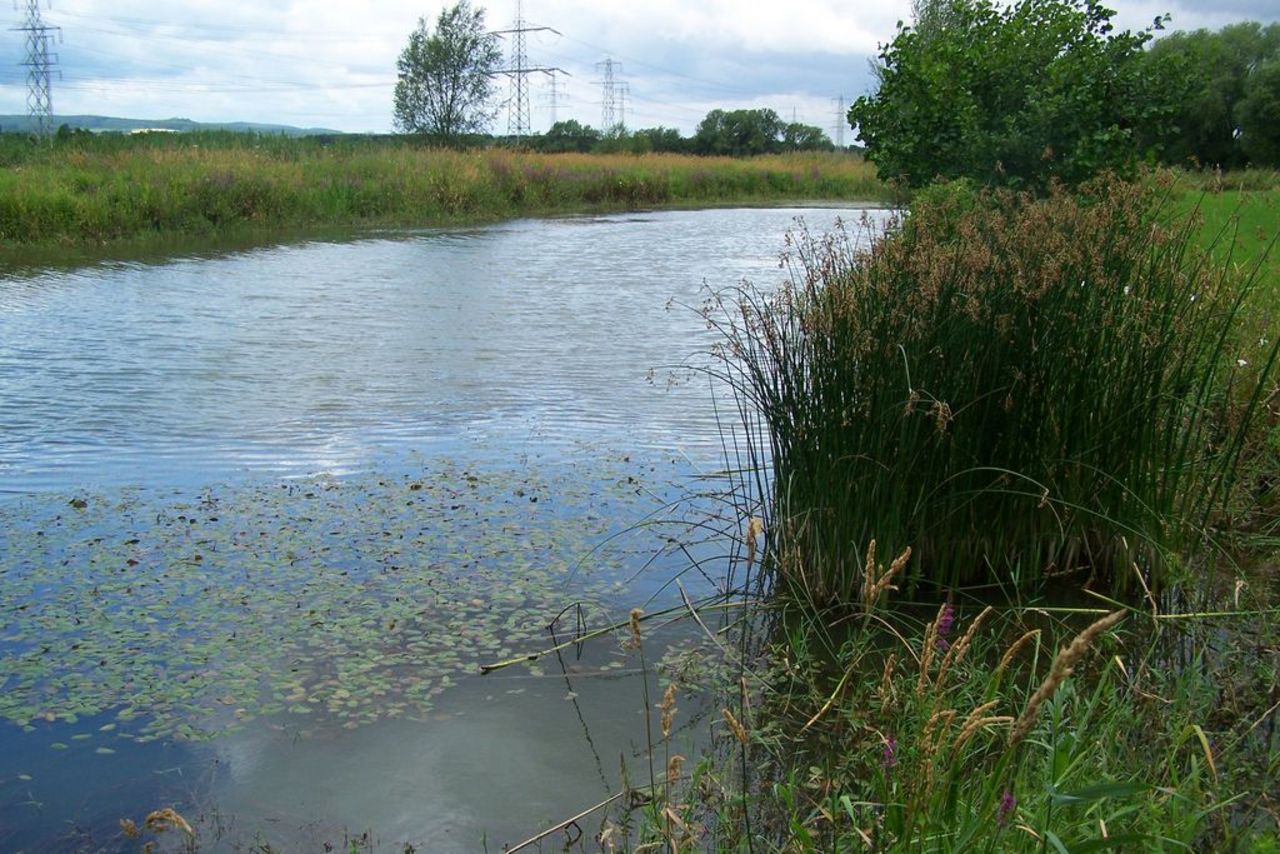Project
Spatially differentiated analyses of agricultural water conservation

Analysis of agricultural and environmental measures in the context of agricultural water conservation and of the EU Water Framework Directive
Diffuse nutrient pollution from agriculture is a major reason that the objectives of the EU Water Framework Directive (WFD) for the water quality in many regions of Germany are not expected to be achieved. In various "AGRUM subprojects," we examine measures of agricultural water conservation using an agro-economic and hydrological model network. The main goal is to evaluate how these measures effect on the water quality and what costs are to be expected. The various "AGRUM subprojects" use the same model approaches but differ in terms of study region, runtime and client.
Background and Objective
The water status has improved significantly after assessments by experts in the past decades. However, further efforts are necessary to achieve the established water protection goals.
In particular the groundwater pollution from diffuse sources is significant.
The inventory in the Weser river basin showed that only 19% of the surface water bodies are in good condition or are likely to achieve this.
Main reasons that target values are exceeded are mostly nutrient inputs from agricultural land use. The water management in the river basin district Weser is therefore urgent to reduce the emission of agricultural nutrients.
The overall objective of the project is to develop a universal model approach for the entire river basin to evaluate and analyse the nutrient situation. It supports a transnationally coordinated management plan and the associated program of environmental measures. With this model approach integrative analysis of the status quo and of measures are possible. We take into account all the significant scientific and socio-economic factors. We develop strategies on this basis, or, as required by the WFD programs, measures for sustainable (agricultural) water protection.
Target Group
policy makers (federal, state, county government); Chambers of agriculture, farm managers, environmental groups, farmers' association, interested public
Approach
To achieve the above objectives, we see the following work steps:
- Merge, update and harmonize a unified data base for each river basin district.
- To couple the Regionalised Agricultural and Environmental Information System for Germany RAUMIS {link: RAUMIS in the model composite} with the large-scale water balance model GROWA and the hydrogeological model WEKU and the MONERIS (Modelling Nutrient Emissions in River Systems).
- Perform model-based analysis of ex-post development and the actual status.
- To consider performing model-based impact analysis of scenarios matched with experts and measures to reduce the pollution of surface waters and groundwater by diffuse nutrient inputs from the agriculture.
Analyse of social and economic consequences for the agricultural sector (income and jobs), such as discussed with experts from the riparian countries of the river basin district Weser.
Data and Methods
As a data base, agricultural statistics and data from the following data surveys were used:
IACS (Integrated Administration and Control System), trade in fertilizers, agricultural accounts, data on climate, topography of, land cover, the water quality of the groundwater and surface water bodies and soil and hydrogeological parameters.
For the analyses in the AGRUM-Weser project we developed and used an interdisciplinary model network, consisting of the regionalised agricultural economics RAUMIS model, the hydrological / hydrogeological models GROWA / WEKU and the nutrient emission model MONERIS.
Results
With the coupling of the models RAUMIS, GROWA, DENUZ / WEKU and MONERIS, we managed to create a model system that is suitable to illustrate the nutrient status of an entire river basin, both realistic and differentiated - in terms of large areas as well as by pathways and necessary actions and to analyze options for appropriate action. We have also made sure that the models can be transferred with relative ease to other river basins (with available data bases). In addition, the composite model is suitable to analytically accompany the action programs of the catchment areas.
Over the last 15 years we have seen that nutrient balance surpluses are reduced. According to the model calculations, this will continue until 2015. Caused by the residence times of nutrients in the soil and groundwater system, the time needed for improved conditions can differ between the regions. However, in a projection until 2015 under status quo conditions (baseline), if one takes into account delayed effects, neither the goals for groundwater nor for surface water could be achieved for the two studied nutrients, nitrogen and phosphorus.
Thünen-Contact

Involved Thünen-Partners
Involved external Thünen-Partners
-
Forschungszentrum Jülich
(Jülich, Deutschland) -
Leibniz-Institut für Gewässerökologie und Binnenfischerei (IGB)
(Berlin, Deutschland)
Funding Body
-
Bundesland Freistaat Thüringen
(national, öffentlich) -
Bundesland Hessen
(national, öffentlich) -
Bundesland Niedersachsen
(national, öffentlich) -
Bundesland Nordrhein-Westfalen (NRW)
(national, öffentlich) -
Bundesland Sachsen-Anhalt
(national, öffentlich) -
Bundesland Schleswig-Holstein
(national, öffentlich) -
Federal Ministry of Food und Agriculture (BMEL)
(national, öffentlich)
Duration
10.2005 - 12.2014
More Information
Project status:
finished
Publications to the project
- 0
Heidecke C, Hirt U, Kreins P, Kuhr P, Kunkel R, Mahnkopf J, Schott M, Tetzlaff B, Venohr M, Wagner A, Wendland F (2015) Endbericht zum Forschungsprojekt "Entwicklung eines Instrumentes für ein flussgebietsweites Nährstoffmanagement in der Flussgebietseinheit Weser" AGRUM+-Weser. Braunschweig: Johann Heinrich von Thünen-Institut, 380 p, Thünen Rep 21, DOI:10.3220/REP_21_2015
- 1
Gömann H, Kreins P, Heidecke C (2013) Lösungsansätze für den landwirtschaftlichen Gewässerschutz : Nährstoffsituation des Flusseinzugsgebietes Weser. Arch DLG 107:91-106
- 2
Kuhr P, Haider J, Kreins P, Kunkel R, Tetzlaff B, Vereecken H, Wendland F (2013) Model based assessment of nitrate pollution of water resources on a Federal State Level for the dimensioning of agro-environmental reduction stategies : the North Rhine-Westphalia (Germany) case study. Water Resources Manag 27(3):885-909, doi:10.1007/s11269-012-0221-z
- 3
Hirt U, Kreins P, Kuhn U, Mahnkopf J, Venohr M, Wendland F (2012) Management options to reduce future nitrogen emissions into rivers: A case study of the Weser river basin, Germany. Agric Water Manag 115:118-131, doi:10.1016/j.agwat.2012.08.005
- 4
Kreins P, Heidecke C, Gömann H, Hirt U, Wendland F (2011) Möglichkeiten und Grenzen der wissenschaftlichen Politikanalyse zur Umsetzung der Wasserrahmenrichtlinie - Anwendung eines hydroökonomischen Modellverbundes für das Weser Einzugsgebiet. Schr Gesellsch Wirtsch Sozialwiss Landbaues 46:325-335
- 5
Kreins P, Behrendt H, Gömann H, Heidecke C, Hirt U, Kunkel R, Seidel K, Tetzlaff B, Wendland F (2010) Analyse von Agrar- und Umweltmaßnahmen im Bereich des landwirtschaftlichen Gewässerschutzes vor dem Hintergrund der EG-Wasserrahmenrichtlinie in der Flussgebietseinheit Weser. Braunschweig: vTI, 342 p, Landbauforsch SH 336

![[Translate to English:] [Translate to English:]](/media/_processed_/2/0/csm_LV_Bei_Hornburg_Quelle_Johanna_Fick_neu_da89674833.jpg)
![[Translate to English:] [Translate to English:]](/media/_processed_/2/0/csm_LV_Bei_Hornburg_Quelle_Johanna_Fick_neu_3aae309567.jpg)
![[Translate to English:] Logo des Bundesministerium für Ernährung und Landwirtschaft](/media/allgemein/logos/BMEL_Logo.svg)